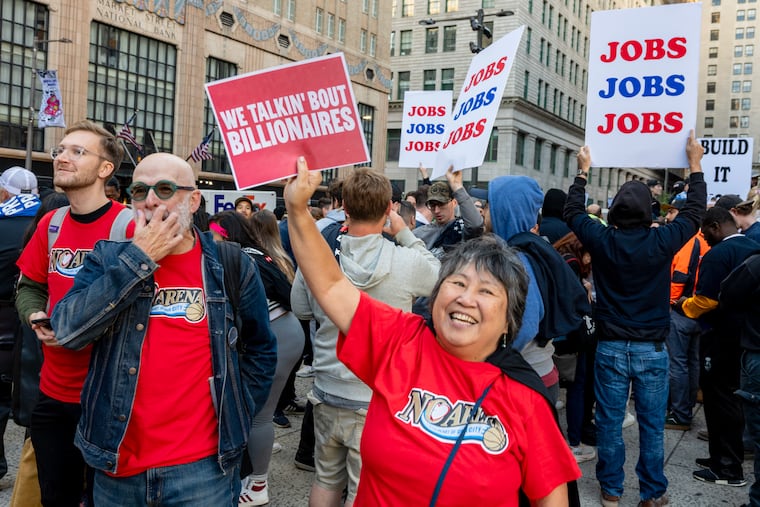When it comes to the Sixers arena, we need a process for the people
The arena is being planned for a site of great significance on what is arguably Philadelphia’s most important street, so it's essential that we have an open, transparent, citizen-led public debate.

We are being asked to trust the process, again.
But when it comes to the proposal for 76 Place, an 18,000-seat arena for the 76ers at 10th and Market Streets, trust should be the result of a great public process, not a leap of faith.
To date, the actions to site, design, and approve an arena on East Market Street have been contentious. The team brought forth a design proposal to transform a portion of the distressed Fashion District into an NBA arena in the summer of 2022. Local opposition immediately lined up, and while the Sixers have conducted significant outreach and have modified their plans in response to community input, the plan remains highly controversial.
Following Mayor Cherelle L. Parker’s endorsement of the plan in September, civic engagement has focused on a transactional negotiation for $50 million in community benefits from the team to help address the concerns of adjoining communities such as Chinatown and fund some of the administration’s citywide projects. Philadelphia City Council is now debating legislation that would allow the 76ers to build the arena as currently designed.
But great civic architecture in the 21st century is not designed by legislation.
The best work grows from a thoughtful and respectful conversation between a people and their elected representatives. The ideal process is one in which professionals, citizens, and public officials together inform the design of a site such as the one proposed by the Sixers — a site of great significance on what is arguably Philadelphia’s most important street atop a rich vein of public transportation.
As such, great planning is not done in a vacuum. It understands the city as a series of social, environmental, and economic systems anchored by landmarks with nodes of activity designed to encourage a vibrant public life. This means understanding the impact of design proposals on the surrounding context.
Sadly, we have no vision for Market East.
A street that has long suffered from repeated attempts to revive its postwar fortunes is yet again being asked to accommodate development without vision. The arena has been presented as the last best hope for the street.
But the public is understandably wary of that prediction, as repeated attempts to achieve these ends, from the much-ballyhooed Gallery to the failed Disney Quest to today’s Fashion District, have only served to depress public life and accelerate the street’s deterioration.
Market Street, Philadelphia’s Main Street, deserves a holistic vision for the corridor.
This means understanding the arena and its impact on the surrounding neighborhood, city, context, and systems. To help jump-start that process, Drexel’s Lindy Institute Civic Design Studio recently put forth urban design principles to help inform the public’s review of the arena proposal with the goal of making the arena a great civic asset.
In the coming weeks, we plan to offer more in-depth research, case studies, and analysis related to the principles. Robust civic engagement and exploration of best practices are necessary for our city to adequately test and refine the principles as they relate to the effect of the arena on Market East, Jefferson Station, Chinatown, and beyond.
As a city, we know how to do this.
Great planning is not done in a vacuum.
The creation of the Civic Vision for the Central Delaware beginning in 2006 was an open, transparent, often fractious public process that crafted a citizen-led, values-based template for the development of the waterfront.
The advent of casino gambling as an economic development tool drove intense public engagement, which turned out to be successful, as it upended decades of failed attempts to revitalize the riverfront.
One need only look to the plethora of beautifully designed public spaces created by the Delaware River Waterfront Corp. and the robust development that it has spawned as proof of concept. The riverfront, like Market East, was once a contested landscape without a vision.
It’s important to note that the arena will ultimately need formal approval from the Philadelphia Art Commission to gain permits for its construction. This is because the arena will be built on public property. As such, the public is a stakeholder and not merely a bystander.
The design of the arena must be a part of a larger planning process for Market East and beyond.
Harris M. Steinberg, a fellow of the American Institute of Architects, is the executive director of the Lindy Institute for Urban Innovation of Drexel University. He led the Civic Vision for the Central Delaware public planning process.